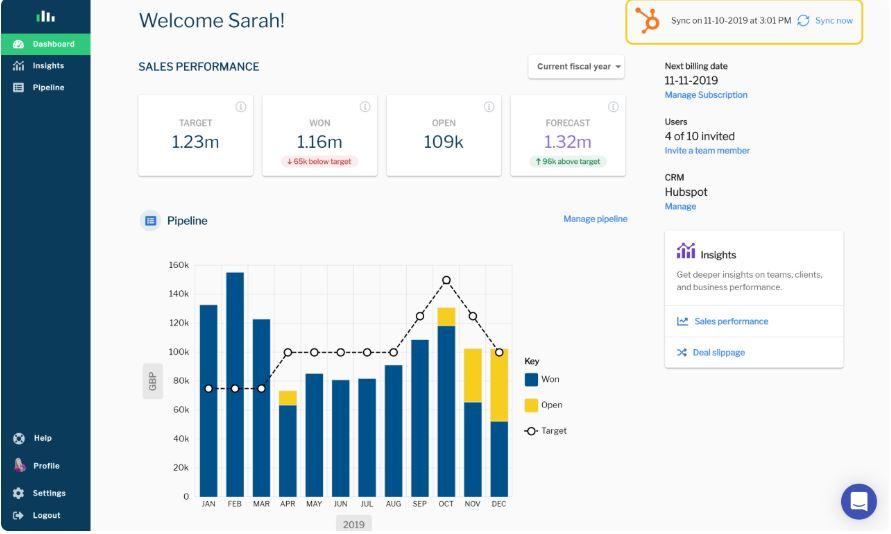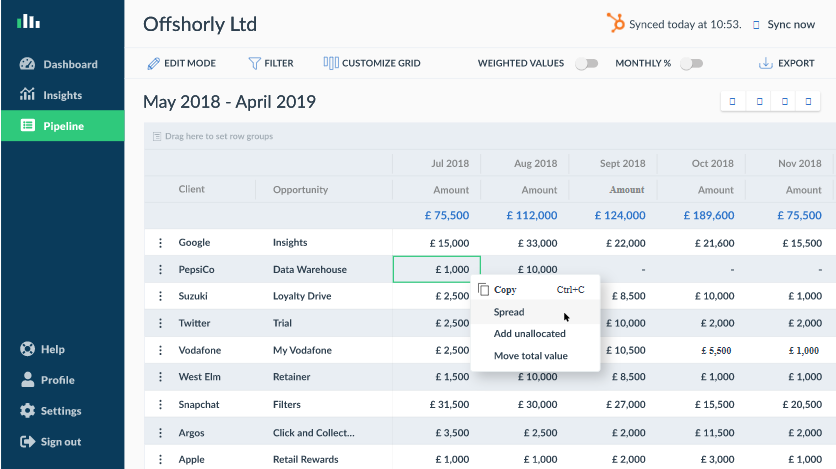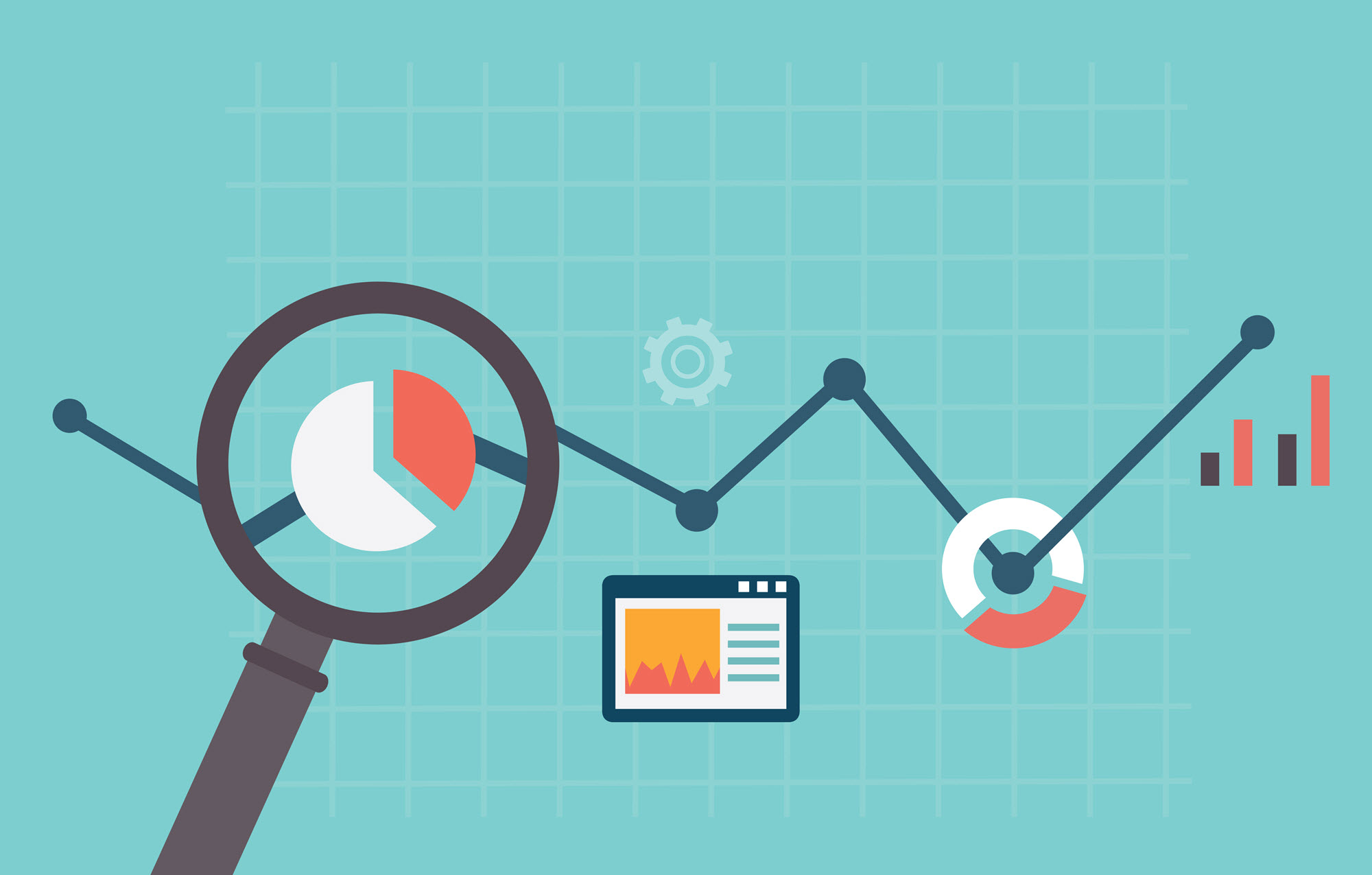
Did you know that better sales forecasting can solve your business problems?
Being able to estimate the future sales for your business is key to its success and growth – so why do we often struggle with this process?
Here’s a complete guide on the how, what and why of sales forecasting, which will hopefully help improve the way your business creates a sales forecast.
Why does sales forecasting matter?
Reliable sales forecasts help your business to plan ahead and play an important role in other key areas of your business planning, including:
Budget tracking – the sales number is often the most important figure in a business’s budget. Reliable sales forecasts help businesses ensure they are keeping on track to achieve growth and/or profit.
Cash-flow planning – sales forecasts are used to make sure businesses have sufficient and timely cash inflows from their customers.
Resource planning – most businesses need to flex their resources, including increasing or decreasing headcount. Sales forecasts allow businesses to plan ahead to meet the changing demands of their customers.

What’s the right sales forecasting method for my business?
There are a few different approaches to sales forecasting which depend on how you want to build your forecast:
Historic forecasting – based on your past sales data. Historical Forecasting is where future sales forecasts are extrapolated from historic sales performance. In its simplest form this would be taking the sales for the previous month and applying a +/-% variance.
Suitable for: This is for you if you’re a high-volume transactional business with predictable income streams or if you’re a business without a sales pipeline (e.g. cash retailer).
If your business varies a lot month-to-month or you’re worried about the next 3-6 months, then this method almost certainly isn’t for you.
Ultimately, historical demand should be used as a benchmark rather than the foundation of a sales forecast.
Basic pipeline forecasting – based on only raw data taken straight from your sales pipeline. Basic Pipeline Forecasting is the processing of forecasting from a business’ raw sales pipeline. In its simplest form, this would be a list of deals under negotiation with customers and prospective customers.
Suitable for: Businesses using a CRM that are solely focused on the next 1-3 months of sales and don’t need projections going further out.
If you track your business’ sales pipeline in a CRM and only care about the next 3 months, then this is probably the approach for you. If you’d also like to look beyond 3-months, then look at Enhanced Pipeline forecasting method below

Enhanced pipeline forecasting – a combination of both the above, where data is collated from different sources and combined to make one report. Enhanced Pipeline Forecasting combines basic pipeline forecasting with intelligent sales velocity modelling to extend forecast predictions beyond the immediate pipeline and improve the level of accuracy.
Suitable for: All businesses using a CRM that would like reliable long and short term forecasts.

If you have a sales team and really care about forecasts, try out QuarterOne’s enhanced pipeline forecasting today. It takes less than 4 minutes to get started.
About the author:
Michael is co-founder of QuarterOne, a sales forecasting application for small businesses. For nearly 10 years Michael has worked in senior finance roles at some of Europe’s fastest growing scale-ups.
Prior to QuarterOne, he was CFO and employee #4 at Black Swan, a VC-backed predictive analytics technology business that was the Sunday Time Start-Up Track winner in 2015. Michael is a Chartered Accountant, with a degree in Economics and an obsession with technology.
About QuarterOne:
QuarterOne is reporting & forecasting software that helps forward-thinking sales & finance teams unlock value from their CRM.
It helps management teams get an instant, meaningful forecast straight from their sales pipeline. By connecting to existing CRM systems such as HubSpot and Pipedrive, and by automating all the number-crunching, QuarterOne provides a clearer and more up-to-date view of the future that our customers can trust.


Did you know that better sales forecasting can solve your business problems?
Being able to estimate the future sales for your business is key to its success and growth – so why do we often struggle with this process?
Here’s a complete guide on the how, what and why of sales forecasting, which will hopefully help improve the way your business creates a sales forecast.
Why does sales forecasting matter?
Reliable sales forecasts help your business to plan ahead and play an important role in other key areas of your business planning, including:
Budget tracking – the sales number is often the most important figure in a business’s budget. Reliable sales forecasts help businesses ensure they are keeping on track to achieve growth and/or profit.
Cash-flow planning – sales forecasts are used to make sure businesses have sufficient and timely cash inflows from their customers.
Resource planning – most businesses need to flex their resources, including increasing or decreasing headcount. Sales forecasts allow businesses to plan ahead to meet the changing demands of their customers.

What’s the right sales forecasting method for my business?
There are a few different approaches to sales forecasting which depend on how you want to build your forecast:
Historic forecasting – based on your past sales data. Historical Forecasting is where future sales forecasts are extrapolated from historic sales performance. In its simplest form this would be taking the sales for the previous month and applying a +/-% variance.
Suitable for: This is for you if you’re a high-volume transactional business with predictable income streams or if you’re a business without a sales pipeline (e.g. cash retailer).
If your business varies a lot month-to-month or you’re worried about the next 3-6 months, then this method almost certainly isn’t for you.
Ultimately, historical demand should be used as a benchmark rather than the foundation of a sales forecast.
Basic pipeline forecasting – based on only raw data taken straight from your sales pipeline. Basic Pipeline Forecasting is the processing of forecasting from a business’ raw sales pipeline. In its simplest form, this would be a list of deals under negotiation with customers and prospective customers.
Suitable for: Businesses using a CRM that are solely focused on the next 1-3 months of sales and don’t need projections going further out.
If you track your business’ sales pipeline in a CRM and only care about the next 3 months, then this is probably the approach for you. If you’d also like to look beyond 3-months, then look at Enhanced Pipeline forecasting method below

Enhanced pipeline forecasting – a combination of both the above, where data is collated from different sources and combined to make one report. Enhanced Pipeline Forecasting combines basic pipeline forecasting with intelligent sales velocity modelling to extend forecast predictions beyond the immediate pipeline and improve the level of accuracy.
Suitable for: All businesses using a CRM that would like reliable long and short term forecasts.

If you have a sales team and really care about forecasts, try out QuarterOne’s enhanced pipeline forecasting today. It takes less than 4 minutes to get started.
About the author:
Michael is co-founder of QuarterOne, a sales forecasting application for small businesses. For nearly 10 years Michael has worked in senior finance roles at some of Europe’s fastest growing scale-ups.
Prior to QuarterOne, he was CFO and employee #4 at Black Swan, a VC-backed predictive analytics technology business that was the Sunday Time Start-Up Track winner in 2015. Michael is a Chartered Accountant, with a degree in Economics and an obsession with technology.
About QuarterOne:
QuarterOne is reporting & forecasting software that helps forward-thinking sales & finance teams unlock value from their CRM.
It helps management teams get an instant, meaningful forecast straight from their sales pipeline. By connecting to existing CRM systems such as HubSpot and Pipedrive, and by automating all the number-crunching, QuarterOne provides a clearer and more up-to-date view of the future that our customers can trust.